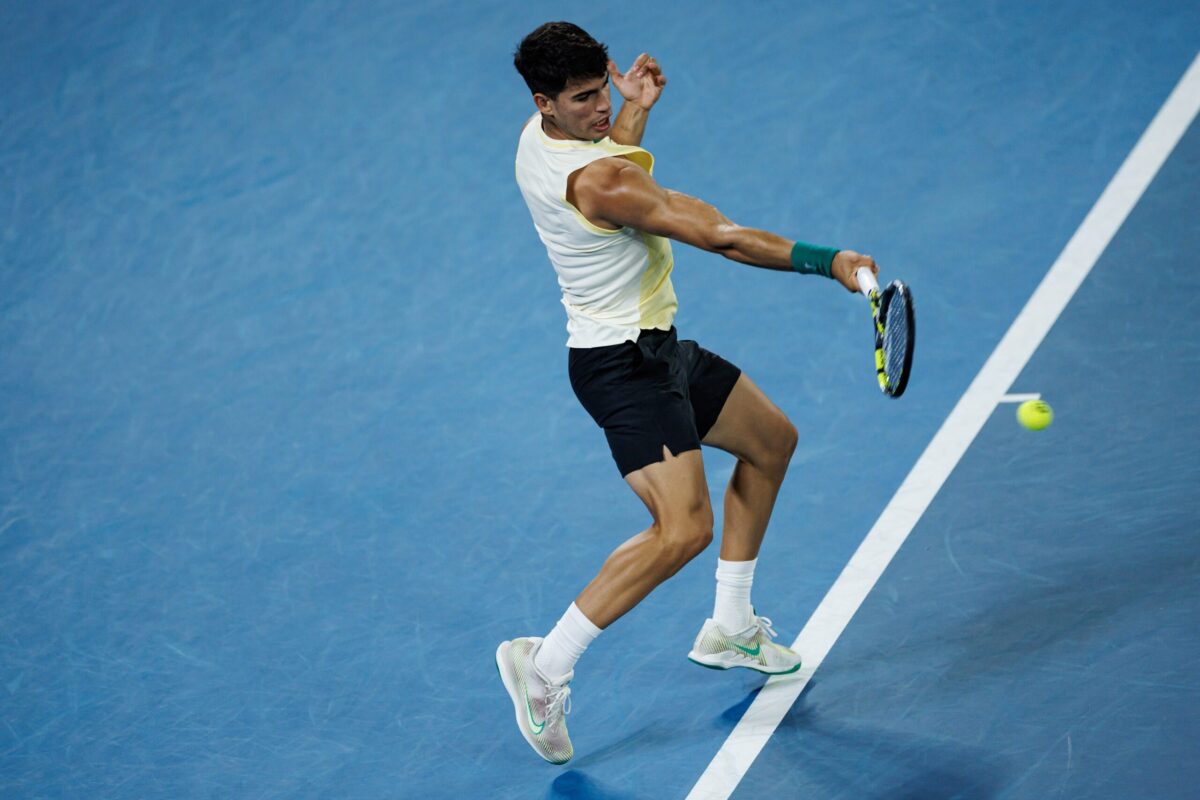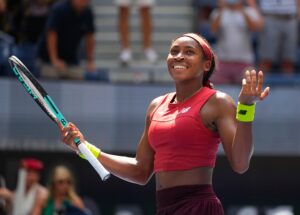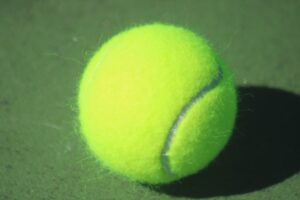Carlos Alcaraz has not yet figured out how to be dominant on fast hard courts, which is a bit surprising as he is a great shotmaker and has an all-around game. There are no bad bounces on this surface to bewilder him. He should be consistently getting to the finals, or at least later stages. Alcaraz is yet to win a title on indoor hard courts and just recently won his first title post-US Open in Beijing. The courts tend to play fast in almost every tournament after the US Open and that’s where Alcaraz has had his worst results.
So far he has reached just one semifinal (Cincinnati 20223 Finals) at the last four hard court Masters (Canada/Cincinnati/Shanghai/Paris), in his career. So what are the possible reasons for his struggle? Let’s see.
Why does Carlos Alcaraz struggle on indoor hard courts?
Technicalities and Gameplan
It’s mostly an issue of being rushed, discipline and a lack of getting free points. The first two challenges originate from his clay-based upbringing, where his natural approaches, are in contrast to traditional indoor tennis. The last comes down to a lack of an important weapon (serve). When Alcaraz is in the attack he doesn’t go for early kill shots and instead tries to set up for an advantageous position in a rally. On fast surfaces, players can transform a rally more easily with one good shot but on grass, Alcaraz has a lot of tools and variety to make it difficult with the bounce. In neutral positions, he plays with a lot of spin whereas flat shots are more effective on this surface.
Alcaraz doesn’t have the best serve and doesn’t hit many unreturnable serves. He thrives off breaking the opponent’s serve but that’s harder to do on fast hard courts, especially against the top 20-25 players, who have big serves at their disposal. There are no bad or uneven bounces on hard courts so the opponents get used to Alcaraz’s delivery and make more returns. Most effective servers get the second ball they’re looking for on indoor hard most of the time. And Alcaraz misses out on that.
Shotmaking is a small part of the package for indoor success, it’s mostly about rhythm and efficiency (and big serving). Alexander Zverev is a great example of that. Alcaraz will have to be one of the very best at that to find success here because he is less likely to become an elite server so is at a disadvantage game-wise.
Lack of Time
For most of Alcaraz’s offensive tools, the most precious commodity is time, most notably on his forehand wing, which is the cornerstone of his game. Learning his trade on the clay lot to do with this. Players who grow up on slow surfaces like clay, tend to have longer swings because they have all the time they need, and they need more power to hit through the slow courts. For example: Rafael Nadal, Dominic Thiem, Casper Ruud, and plenty of others. So, on faster surfaces, players who take the ball early can rush the Spaniard and deprive him of the time he needs to set up his shots.
Inconsistency
Alcaraz still suffers from a bit of inconsistency. His peak is great, as witnessed by his best matches and overall results, like the wins over Sinner in Indian Wells and Beijing, and the the two Slams he won this year. However, he plays a difficult game and when the concentration is not at its maximum, the error count goes up. This makes him a bit more vulnerable against lesser players. Perhaps this is also more of an issue late in the season, contributing to the lack of great indoor results.
What can he do to Improve?
Alcaraz has improved his spot serving this year and he can still improve it, which will help a lot. Flattening out the forehand and coming more to the net would also be the key. The Spaniard can also get better at redirecting the pace coming off the opponent’s shots rather than using his full power all the time. Mostly it comes down to doing a lot of things differently to outdoors since indoors favors a certain “in the zone” tennis which is mostly rhythm-based in the sense that here you often play the ball to out-position your opponents compared to outdoors where you can hit them off the court.
Also, one extremely important point is that Carlos Alcaraz is still 21. Because of the weight of expectations on him, he feels he has to always do better when he is still learning. With experience court speeds won’t become an excuse but in his young career, it will be an issue. Alcaraz also needs to take it on the chin and not complain every time he sees the court is fast, as it will only put him under more pressure. He just needs to keep working for it and the results will show.
Main photo credit: Mike Frey-USA TODAY Sports






